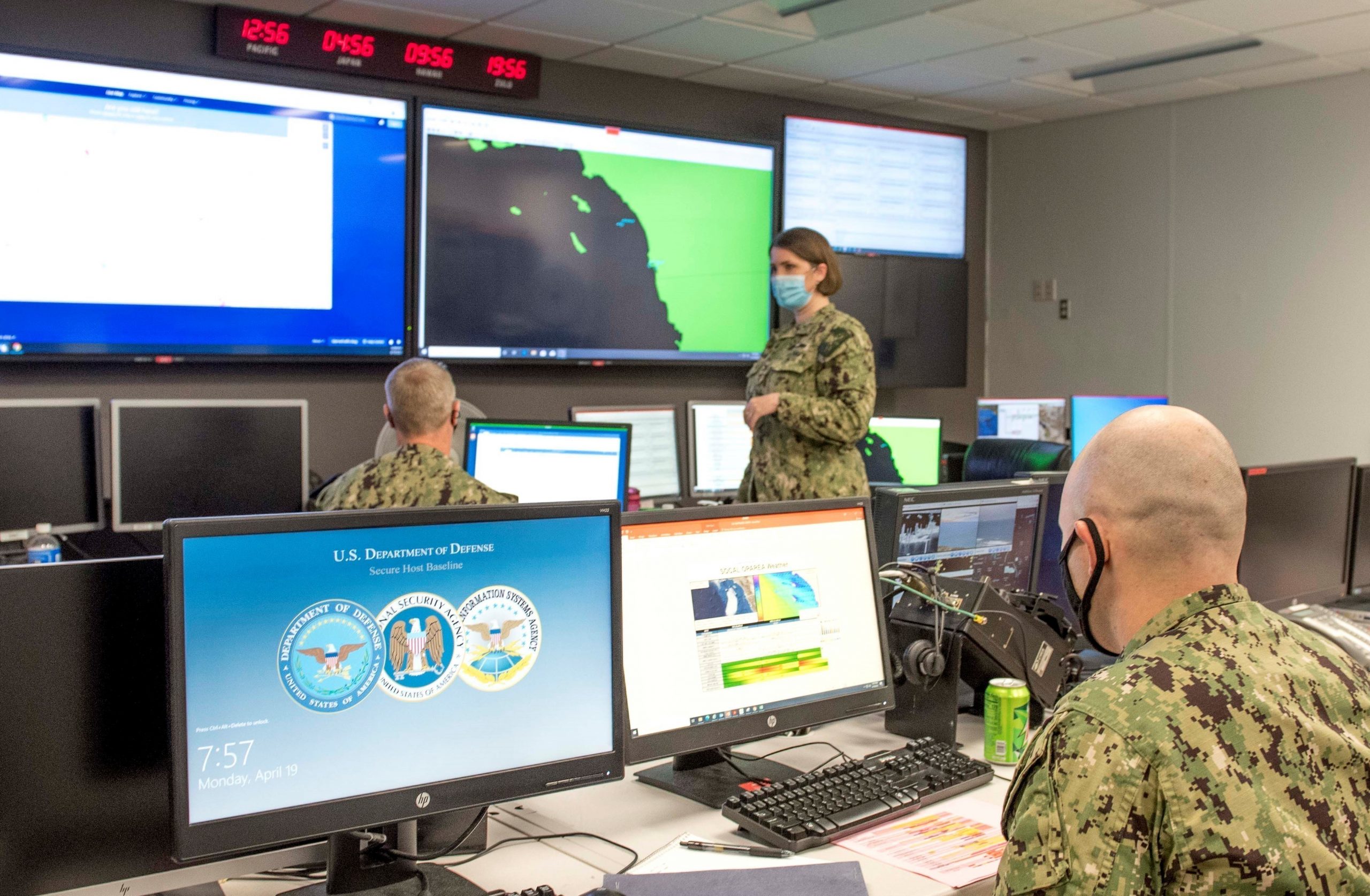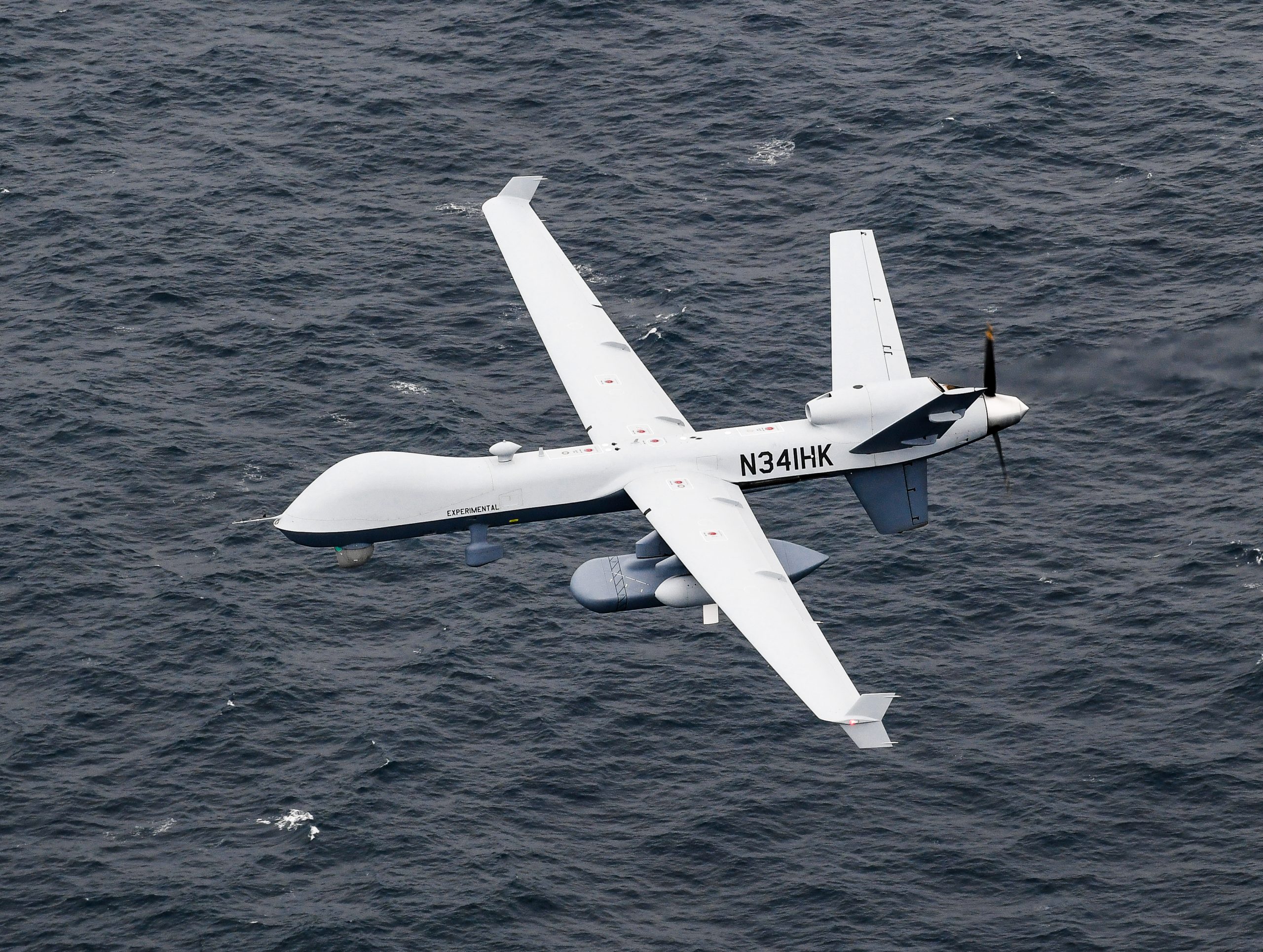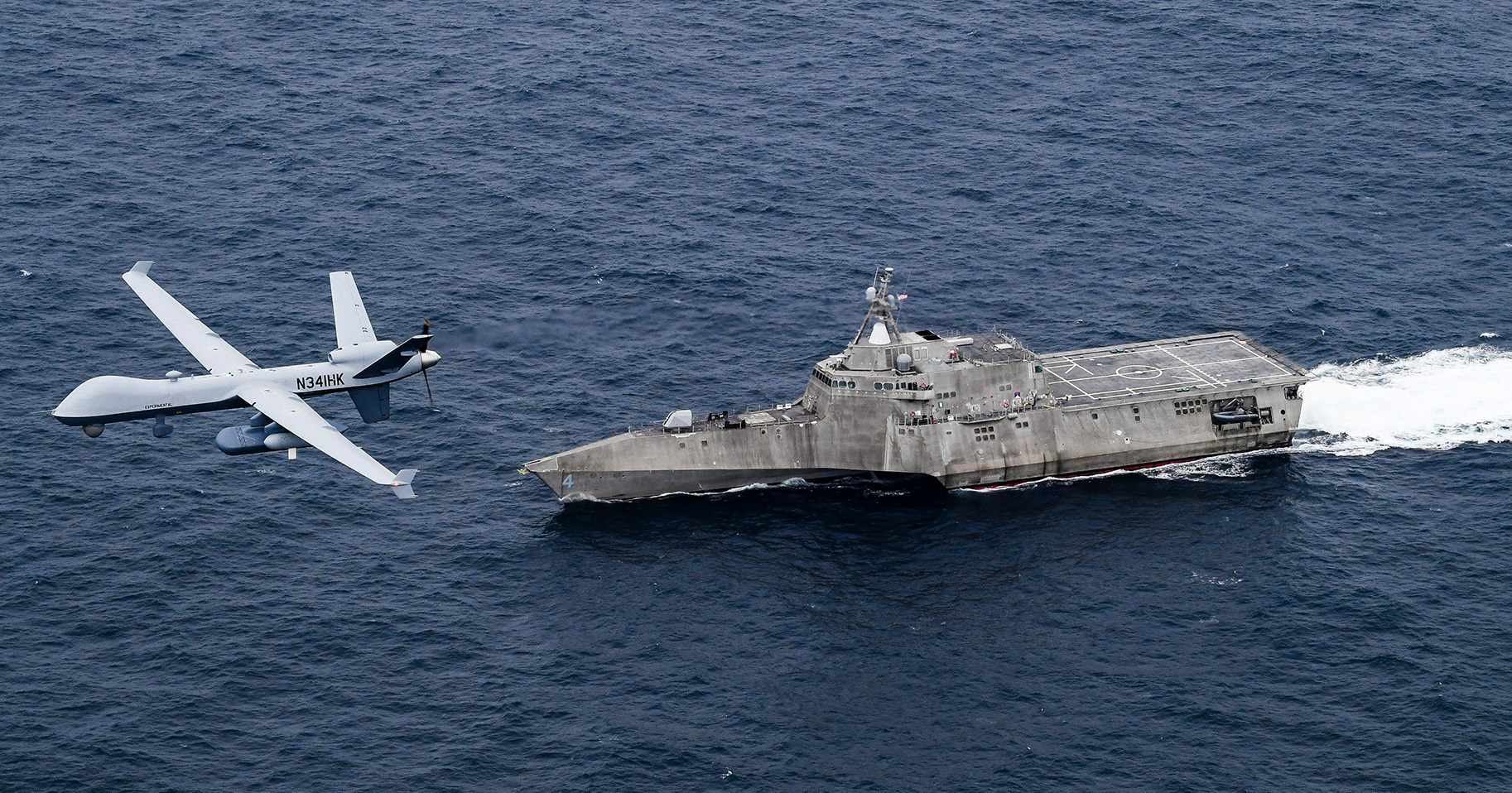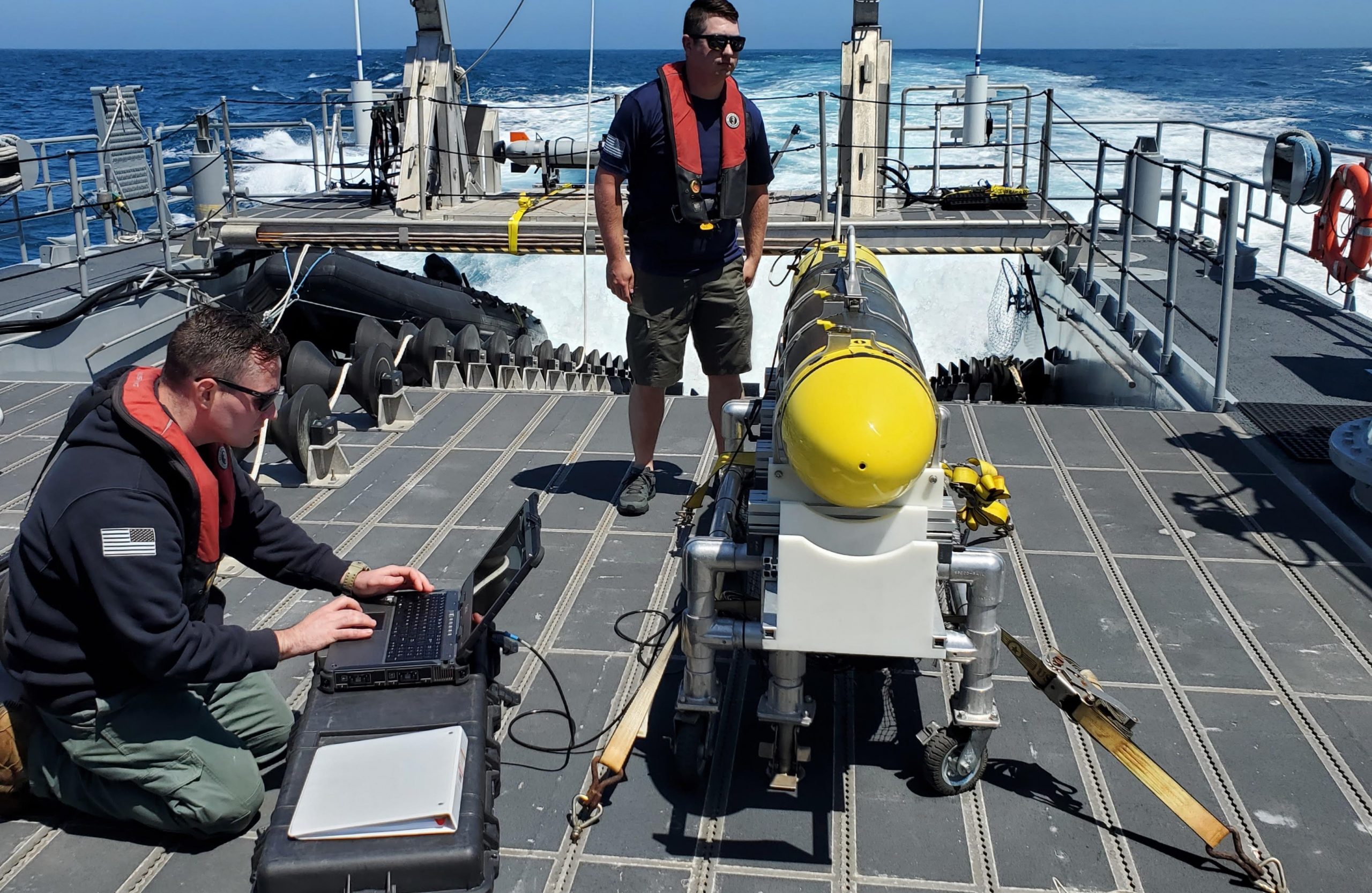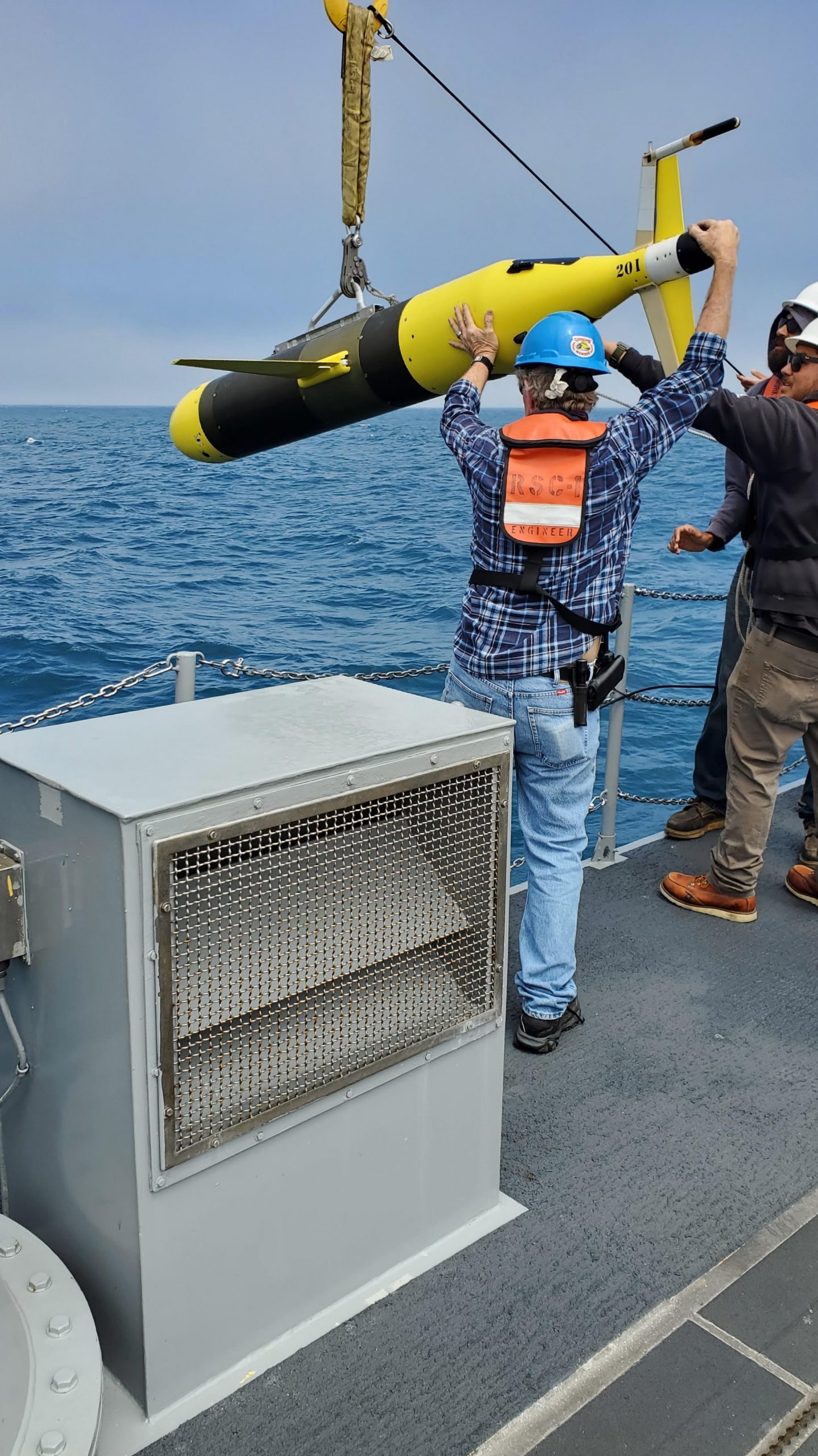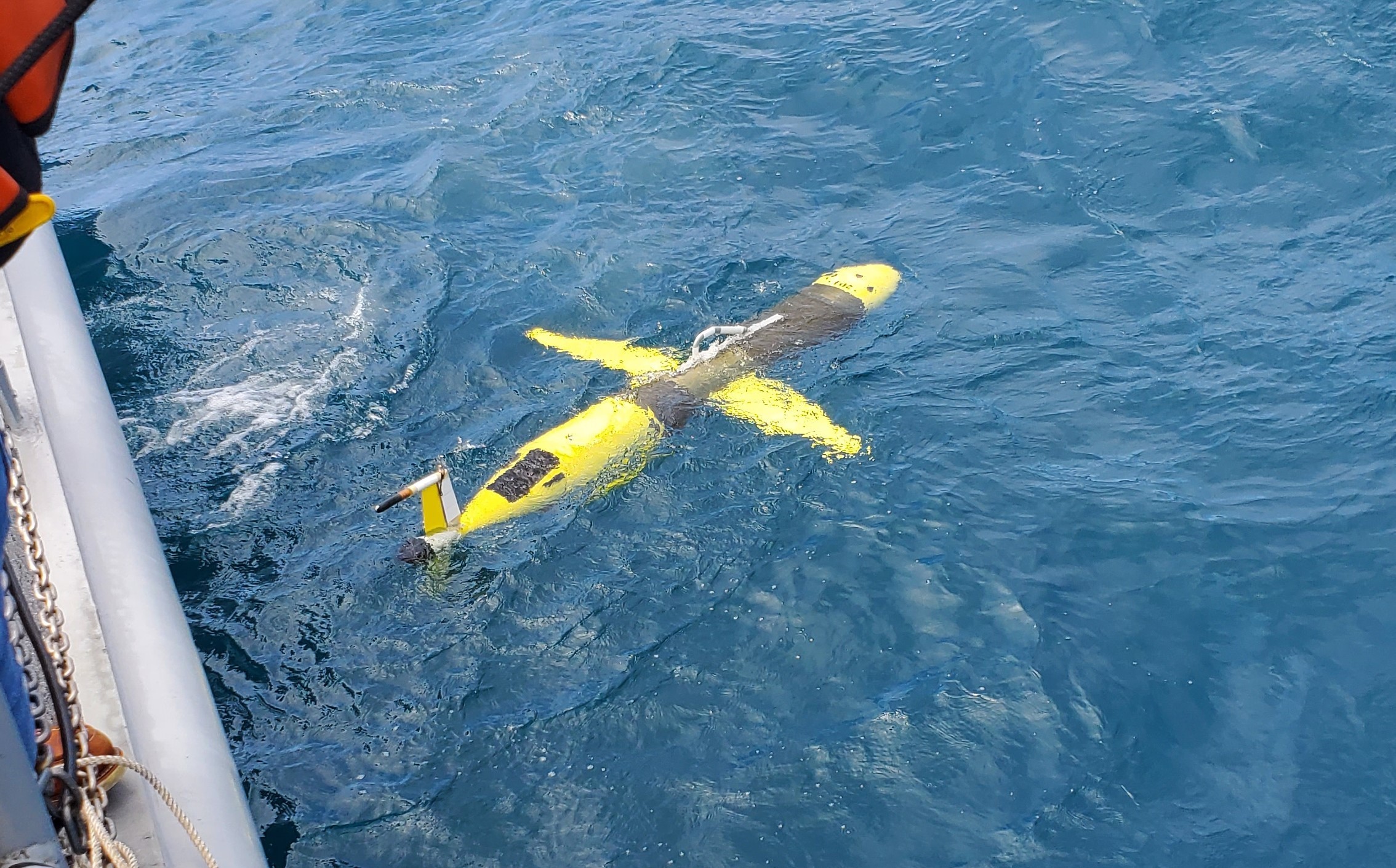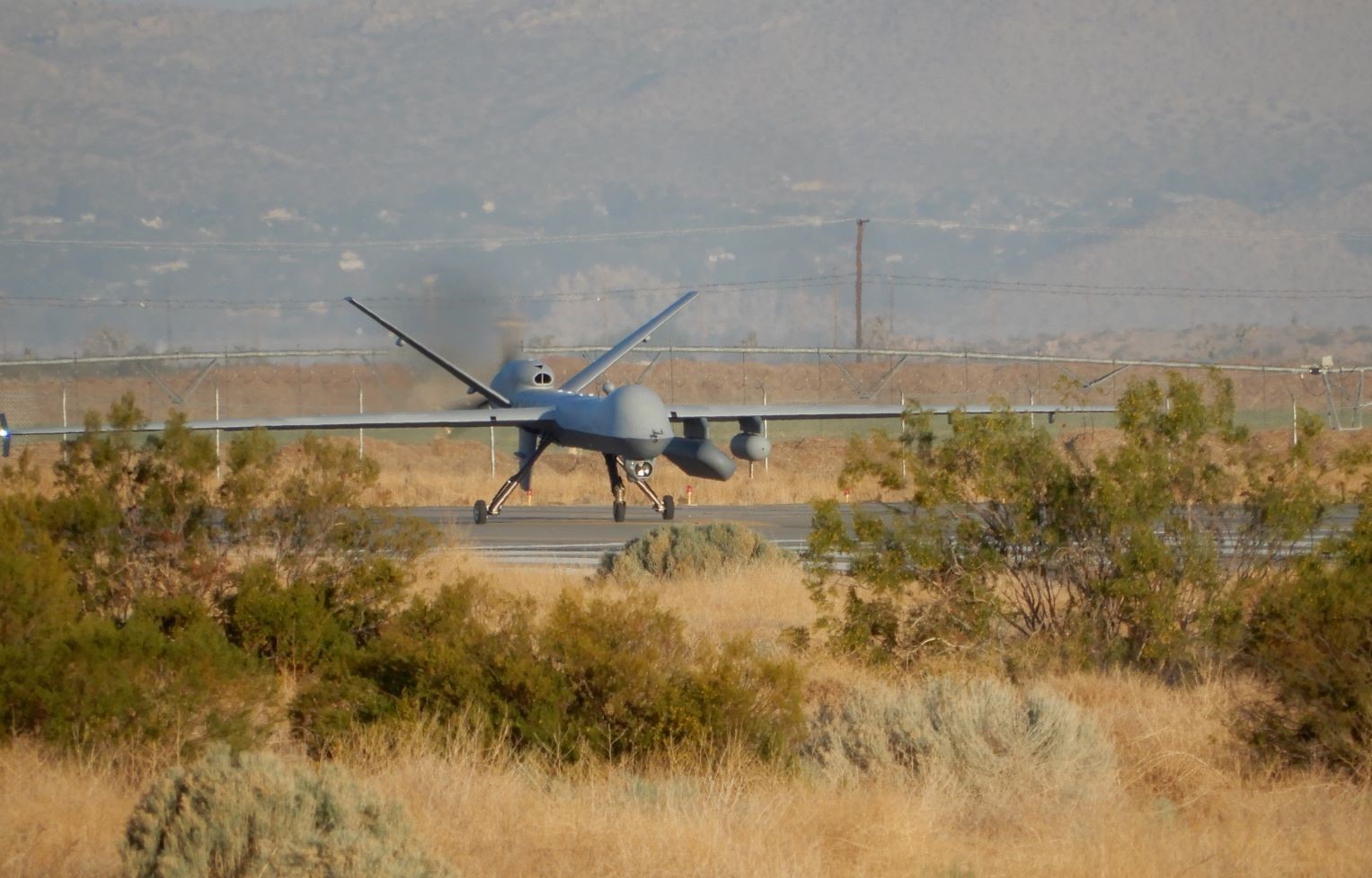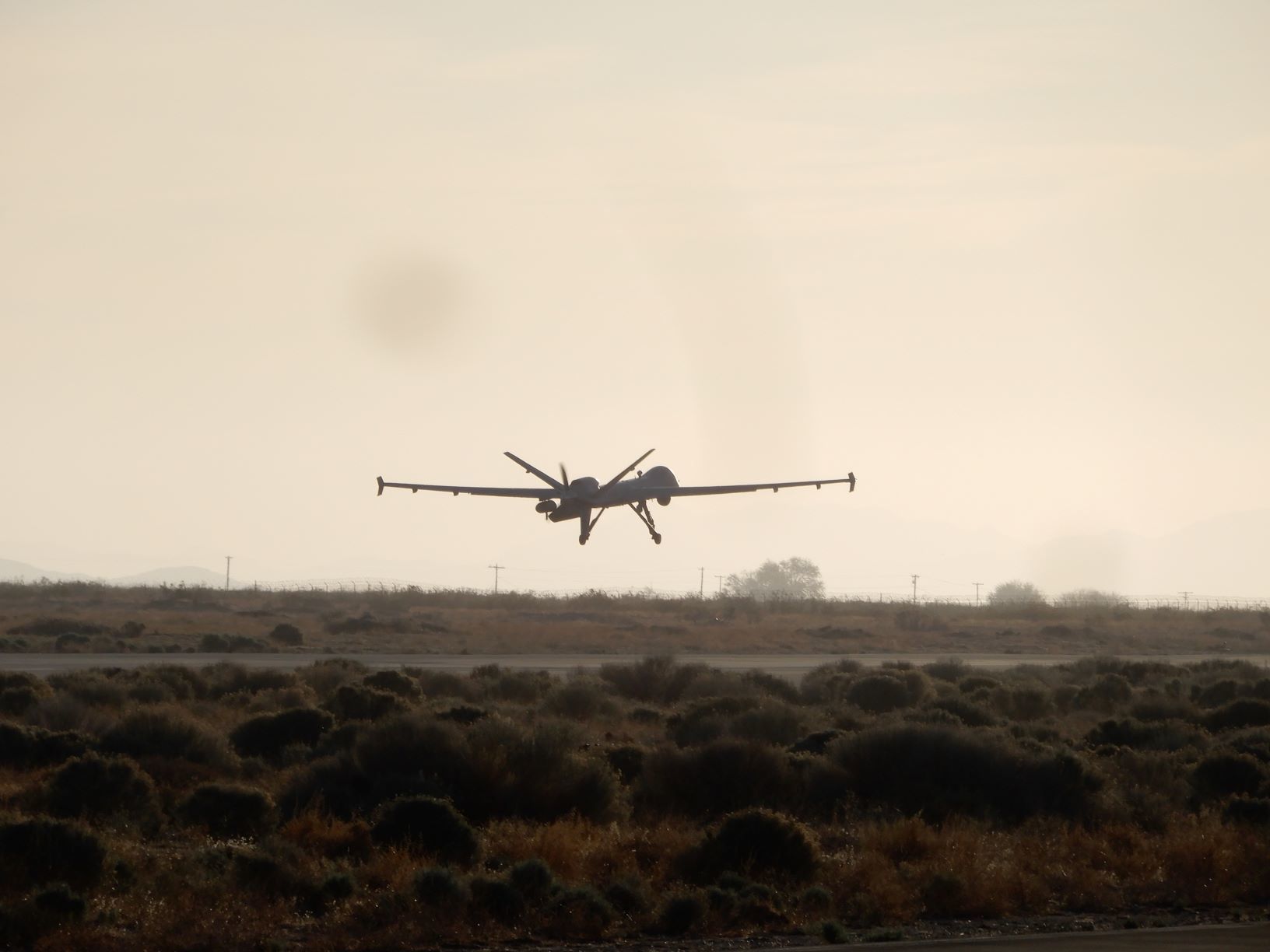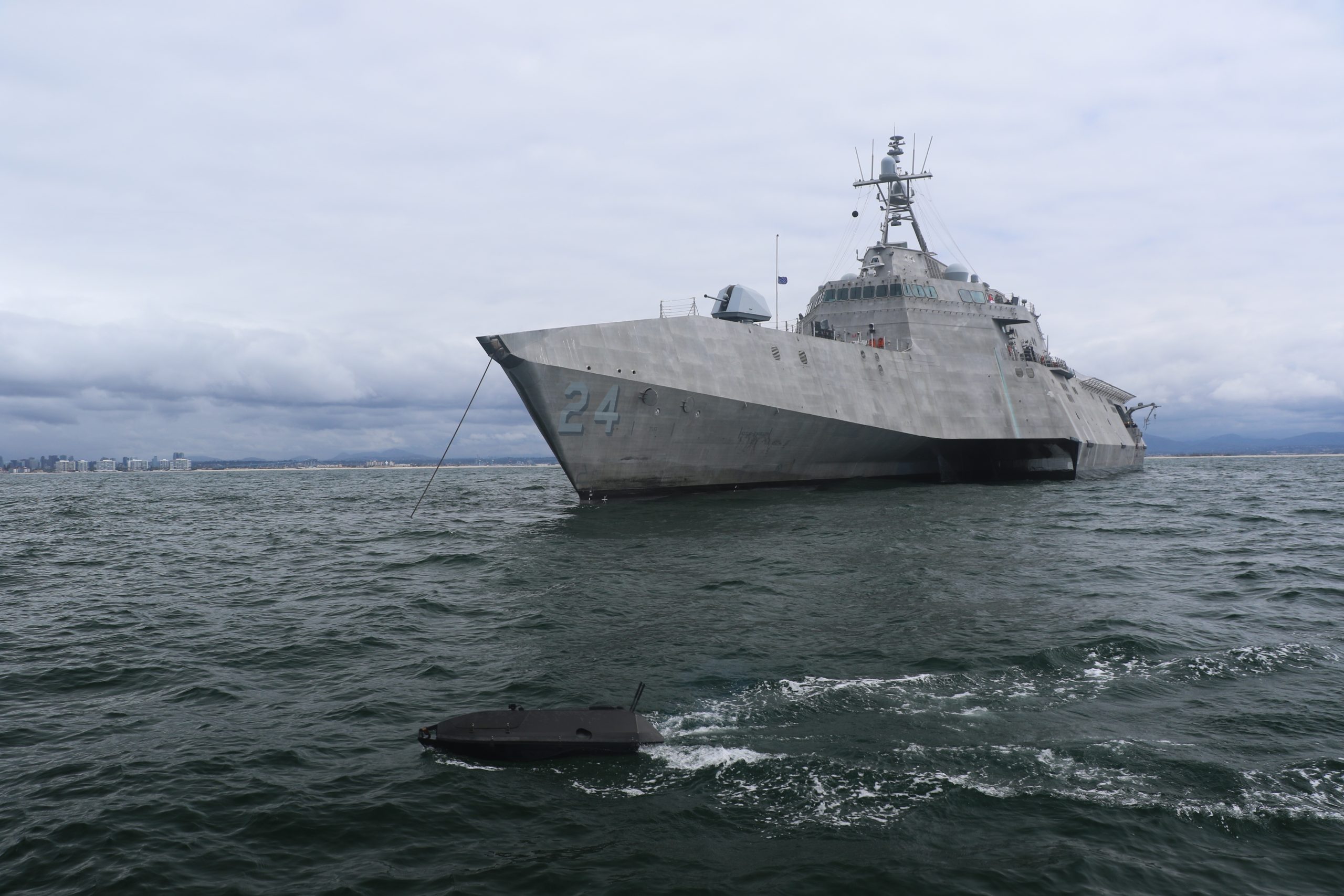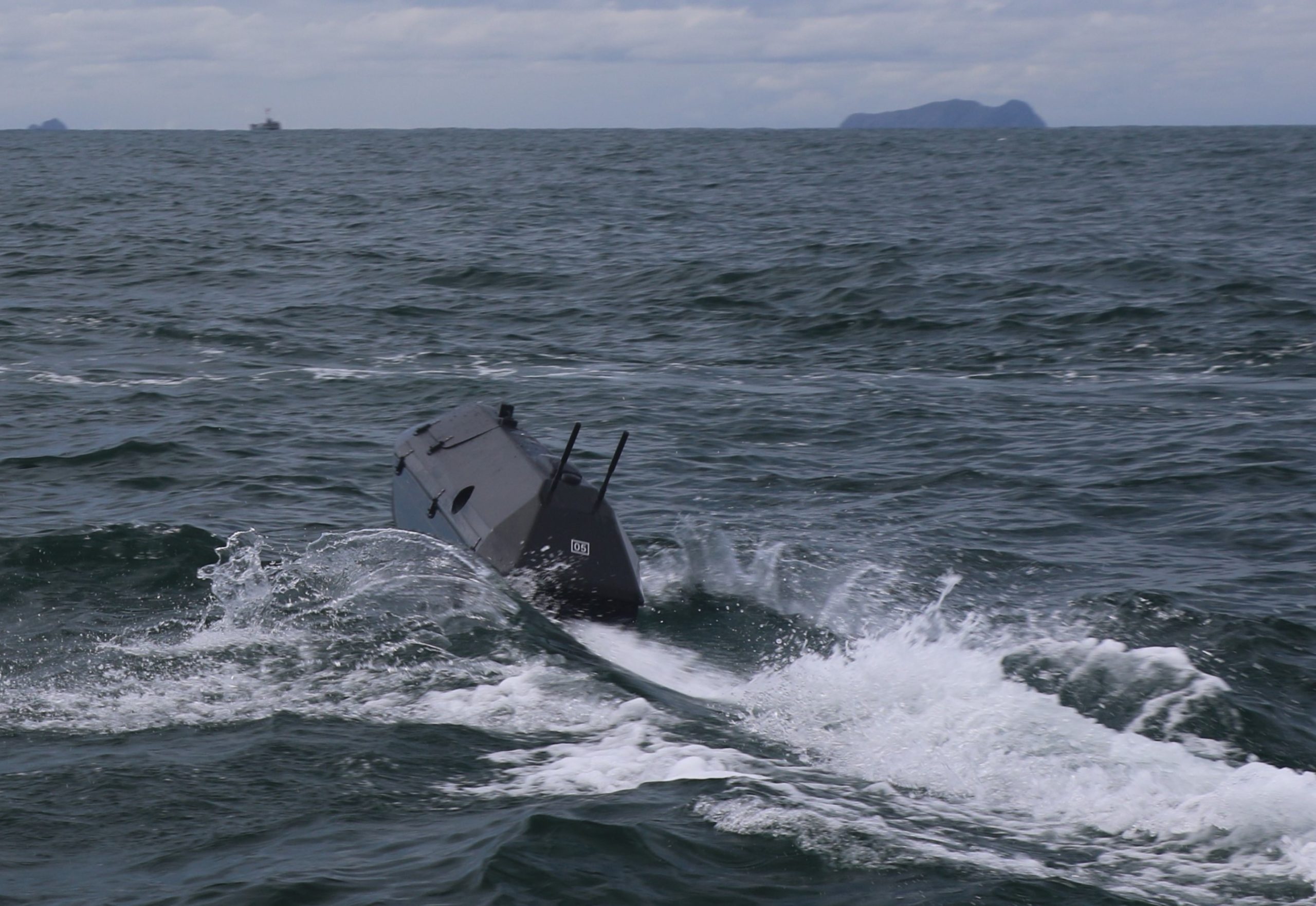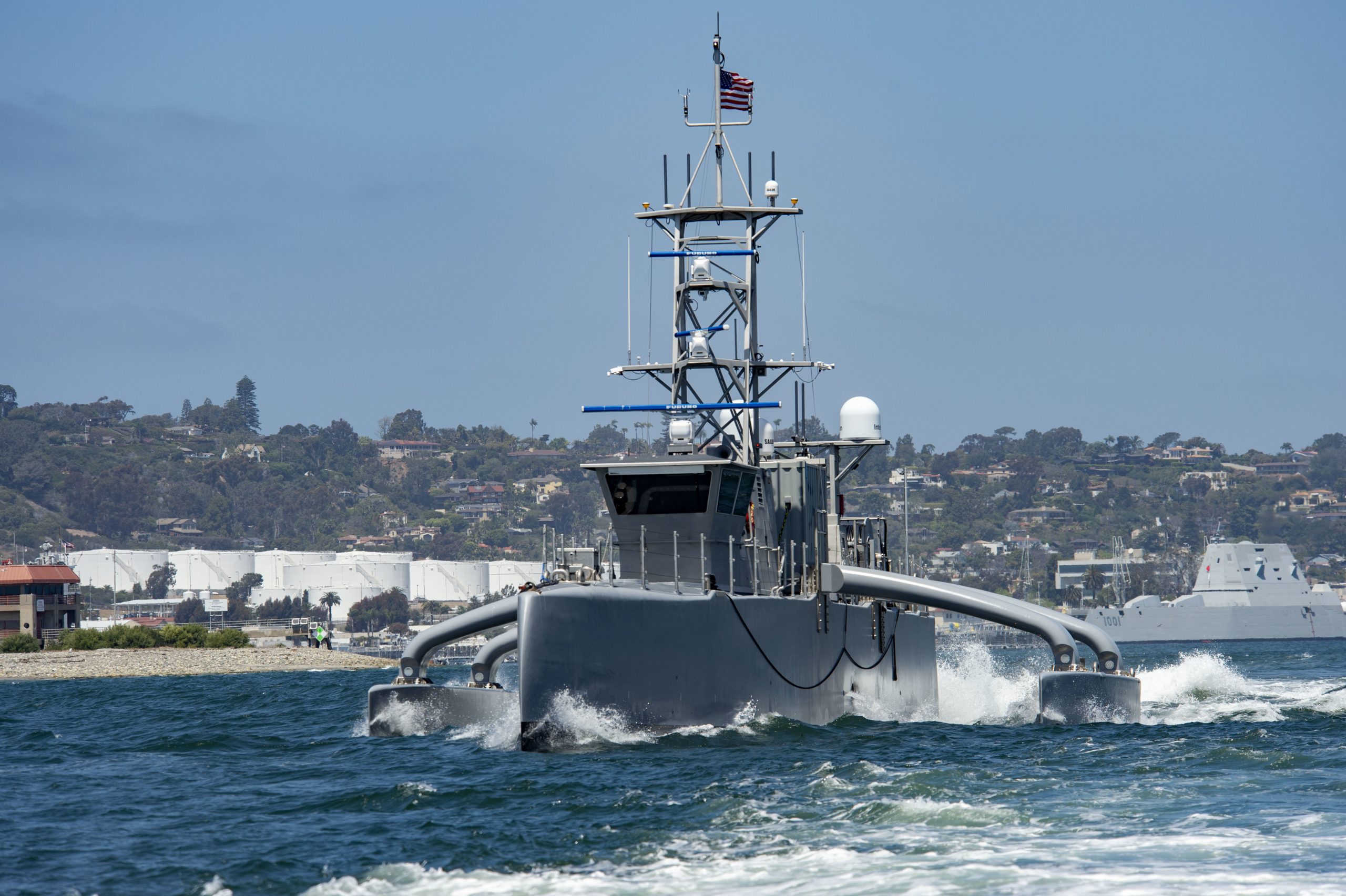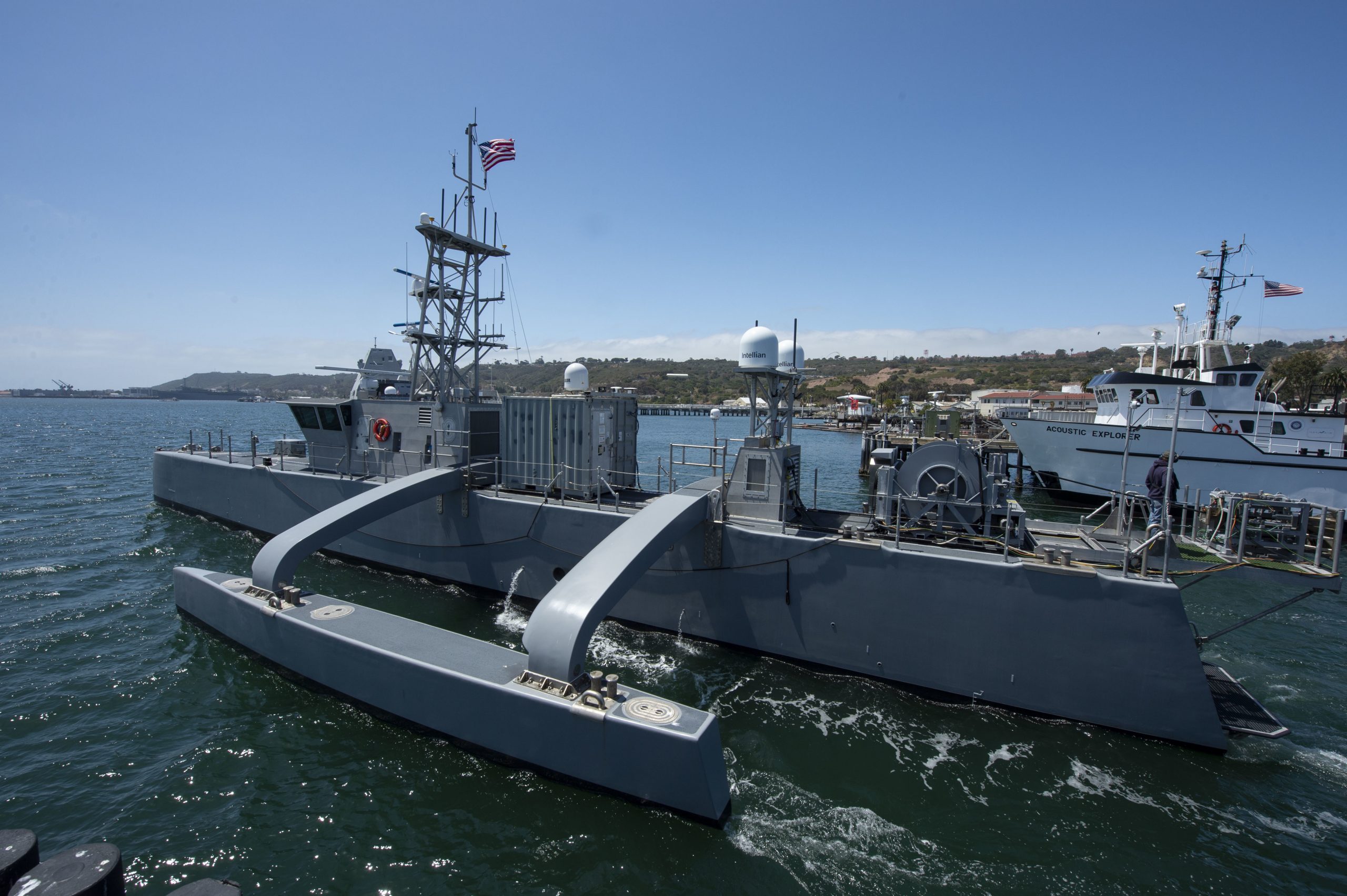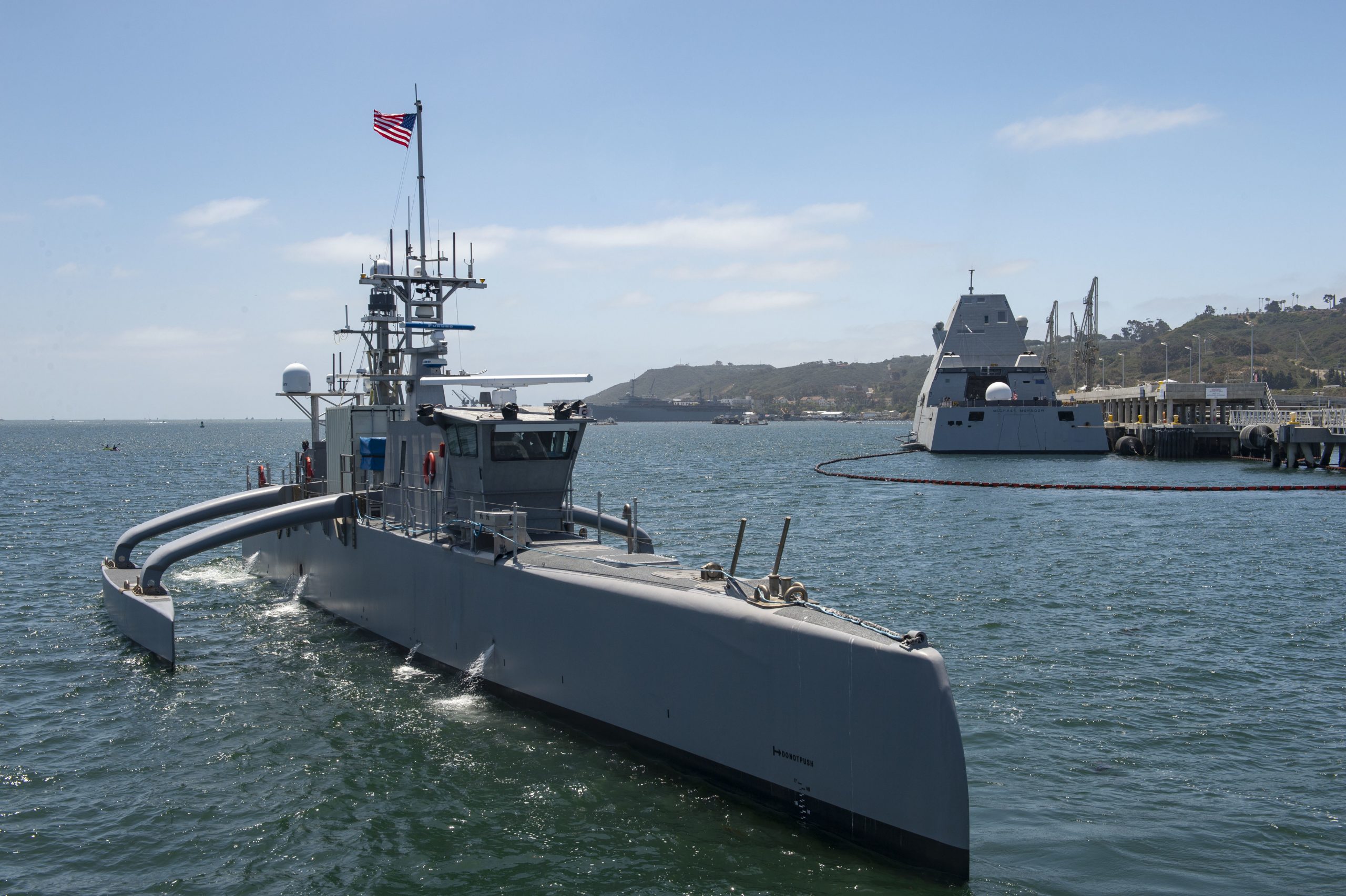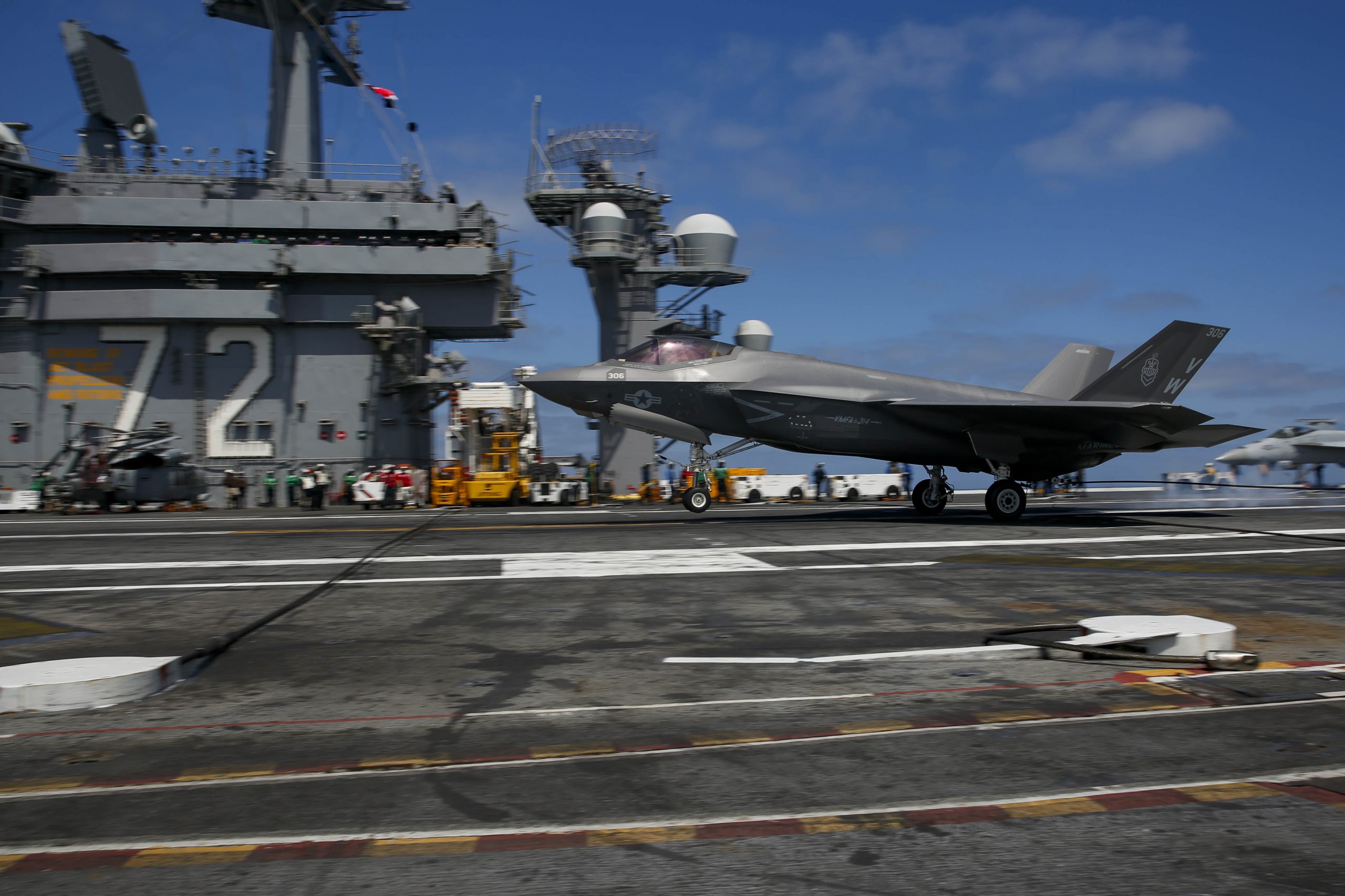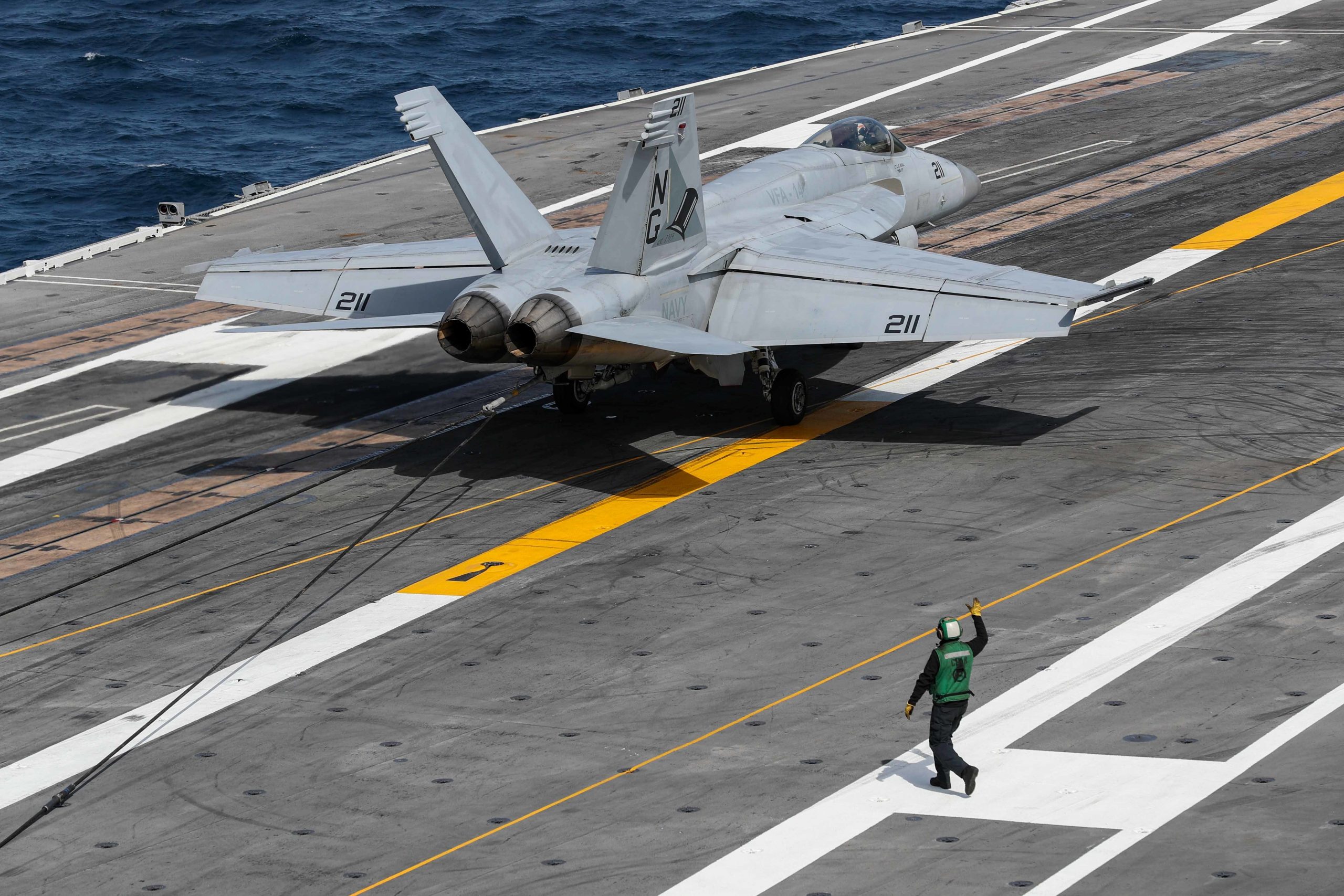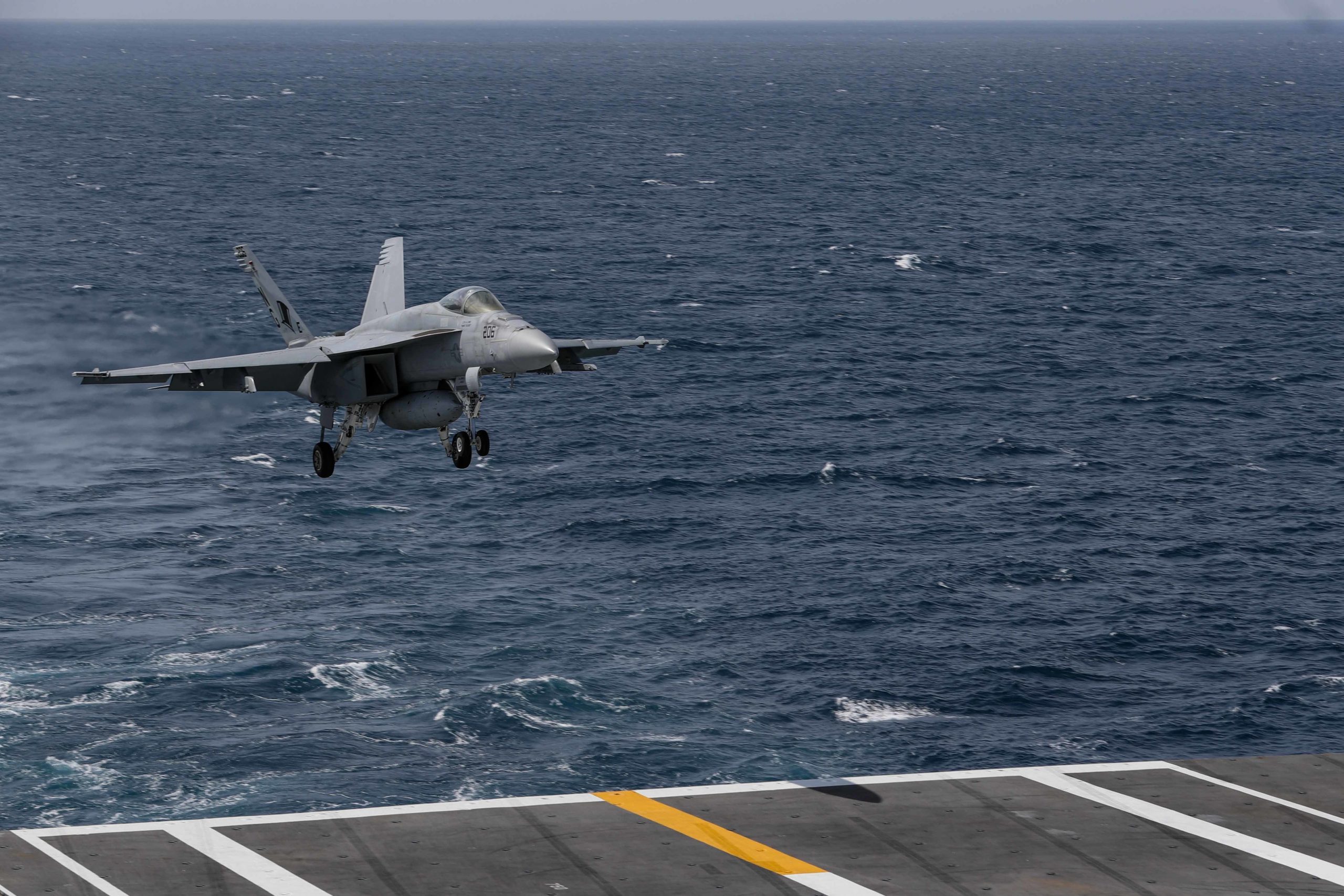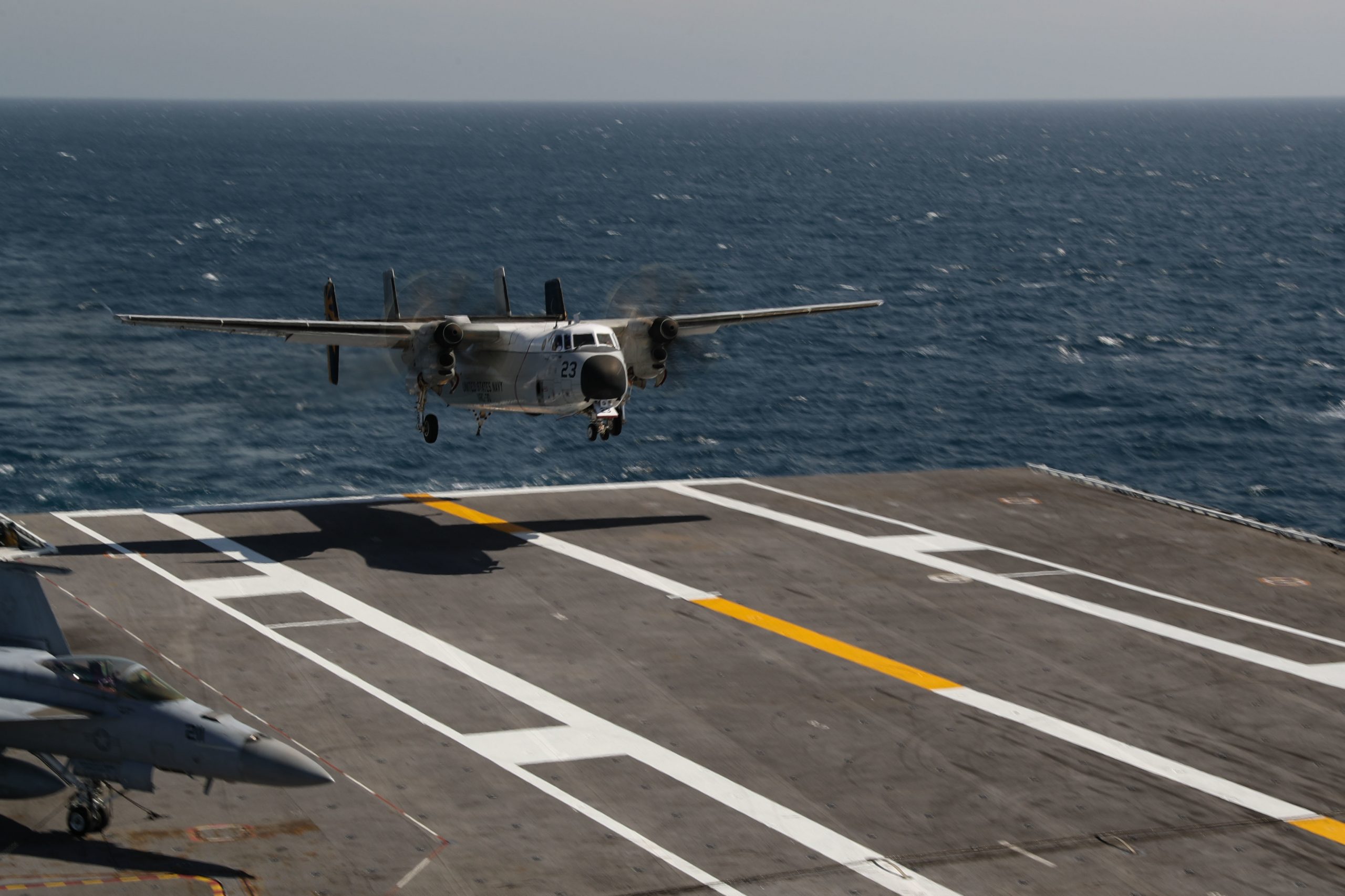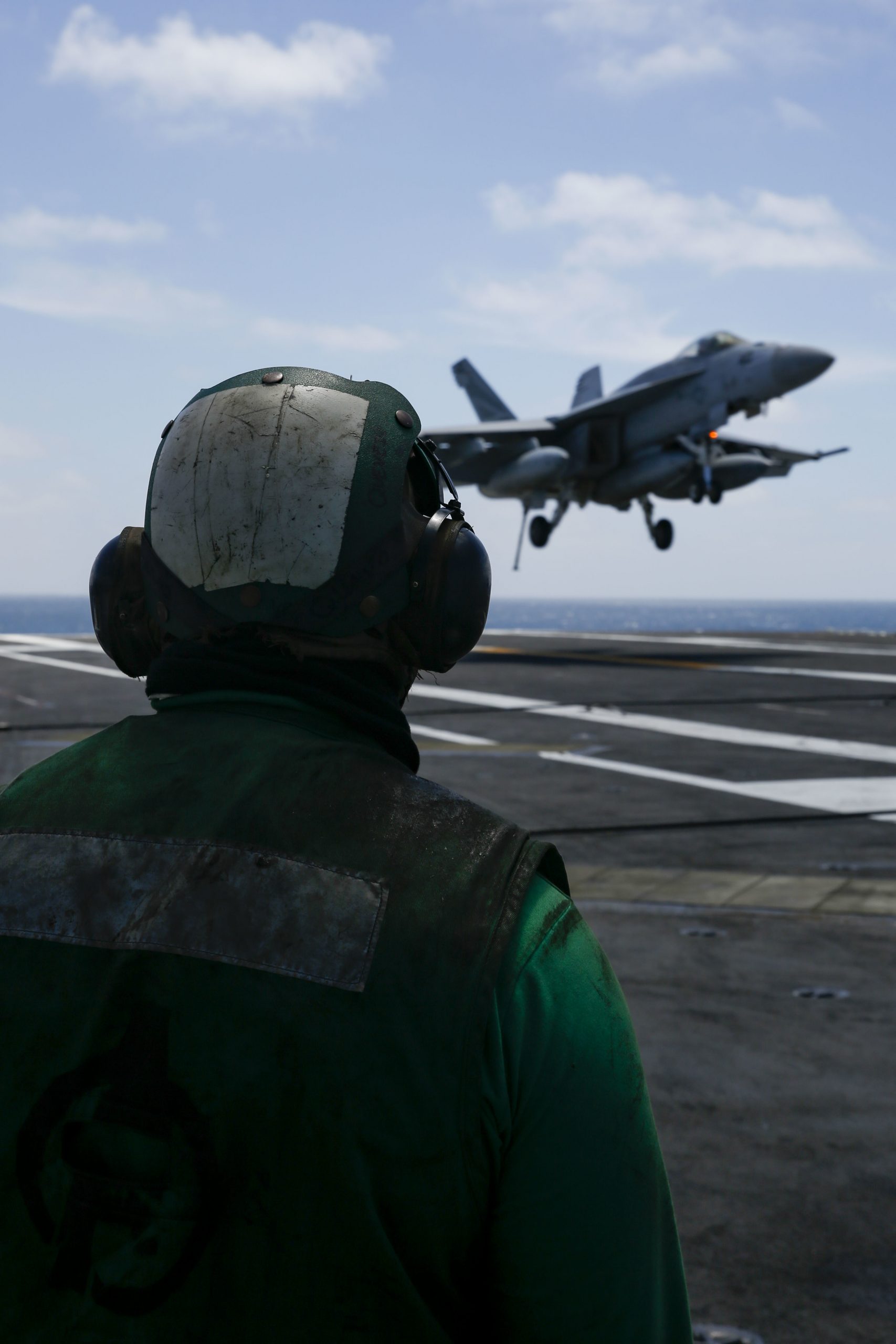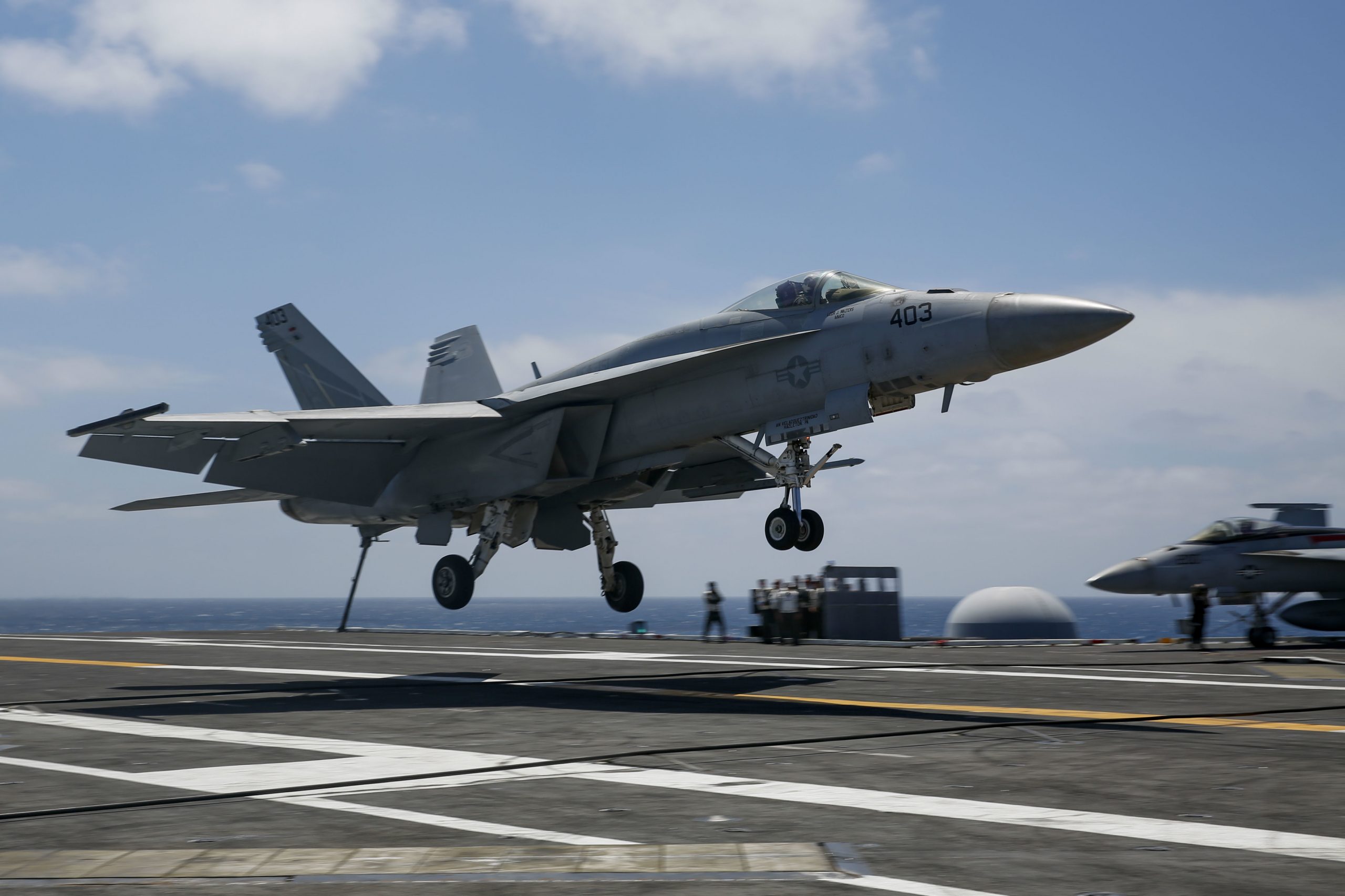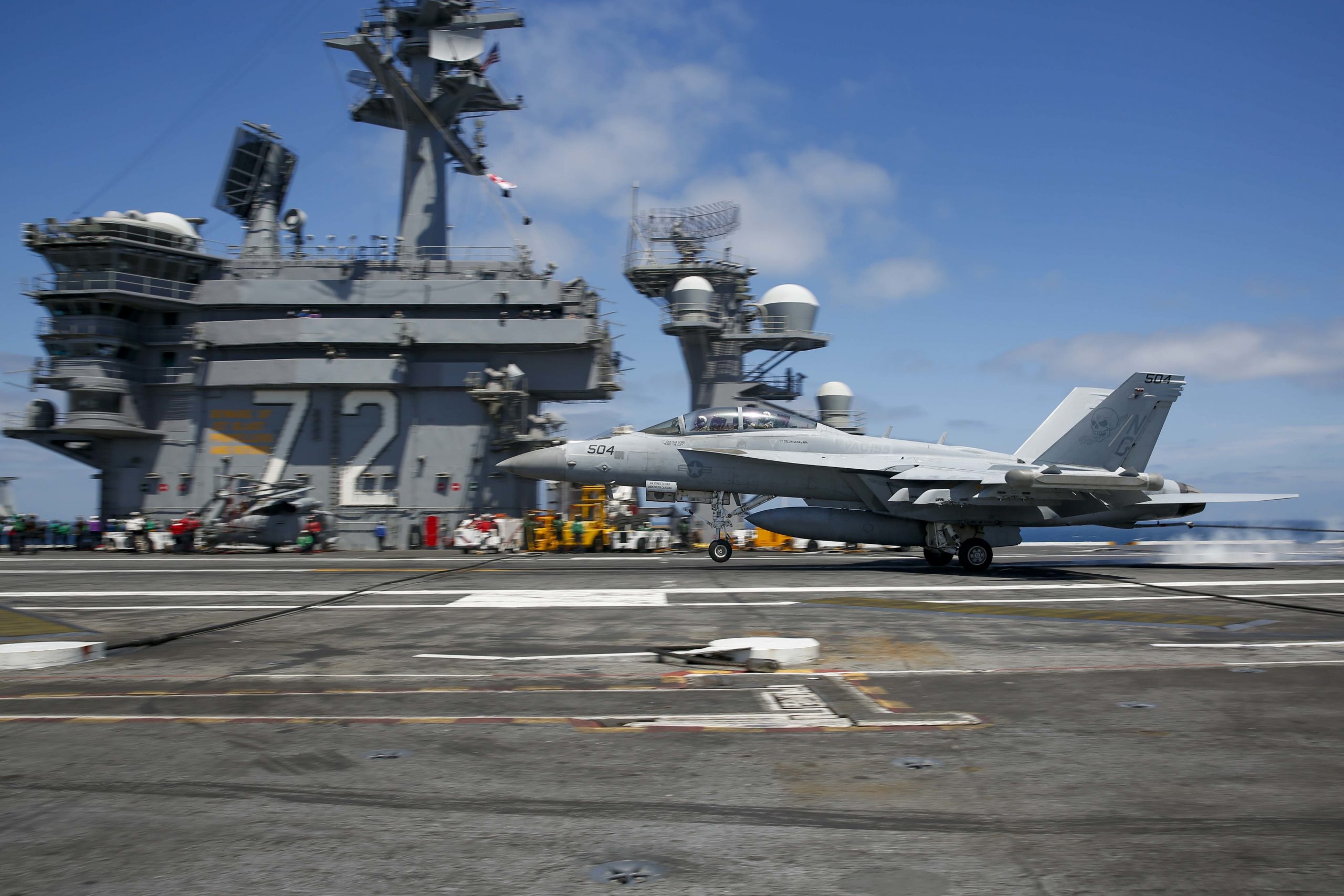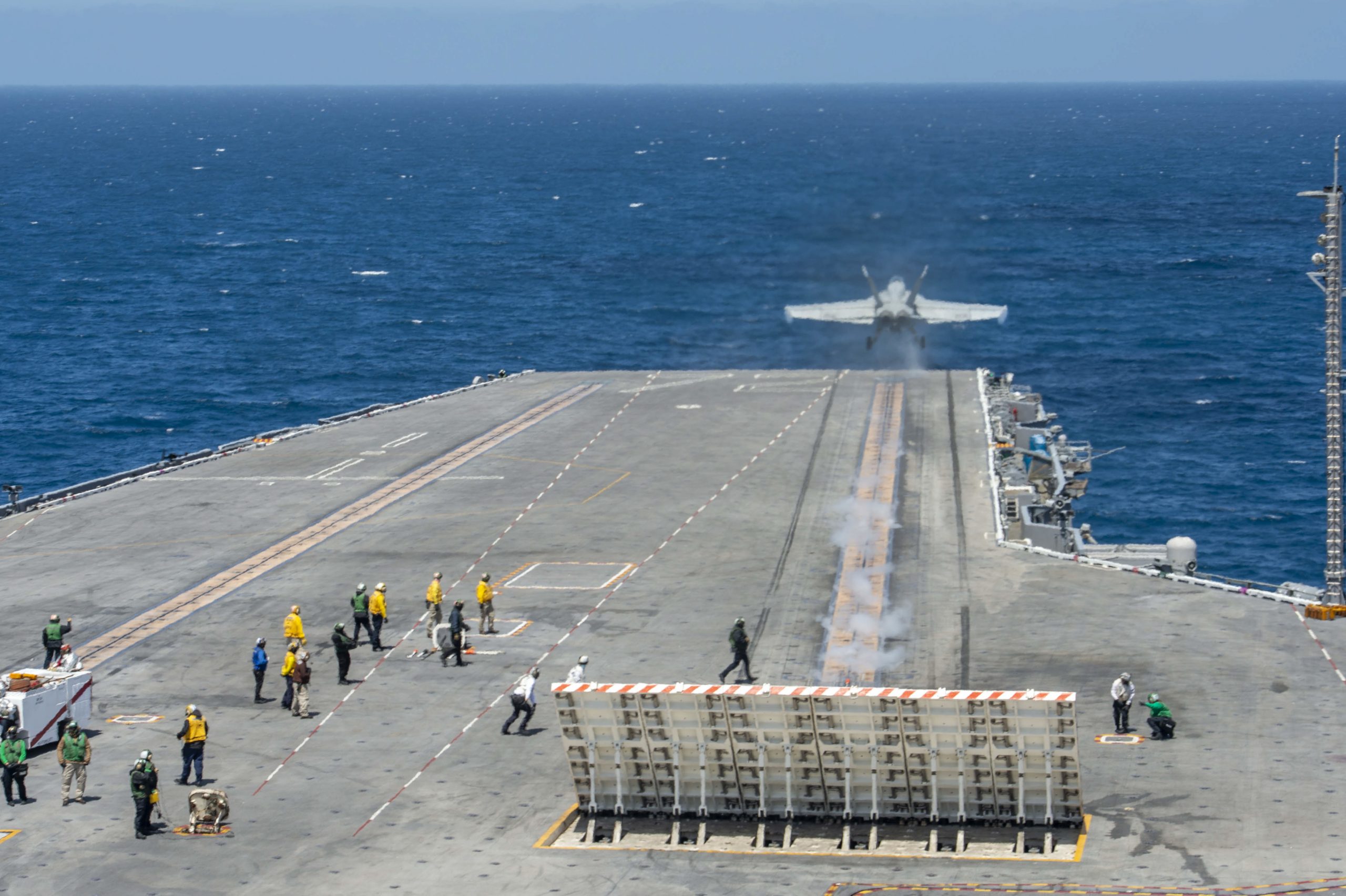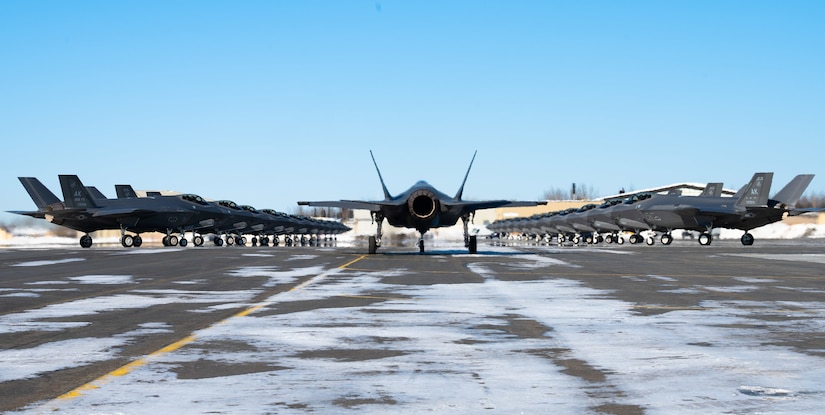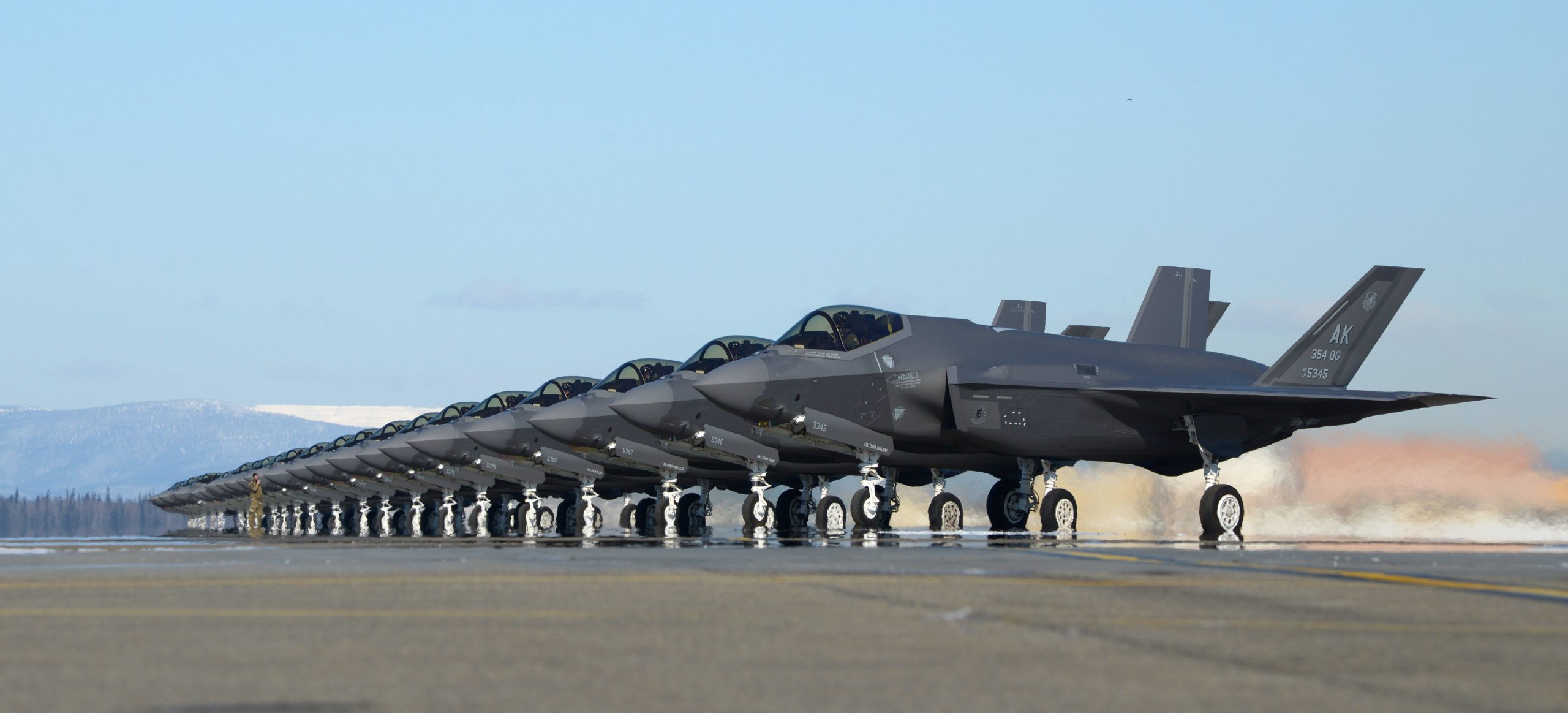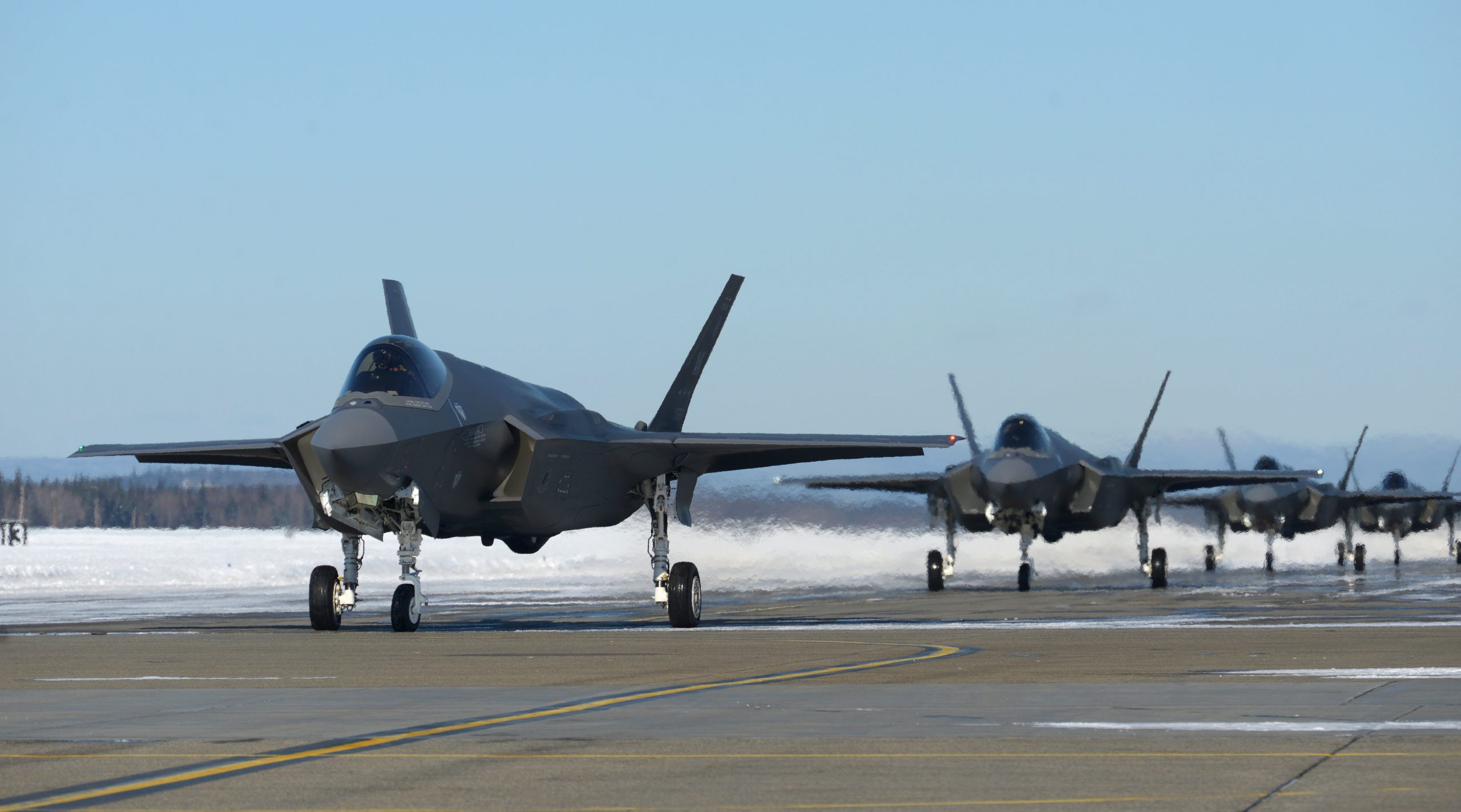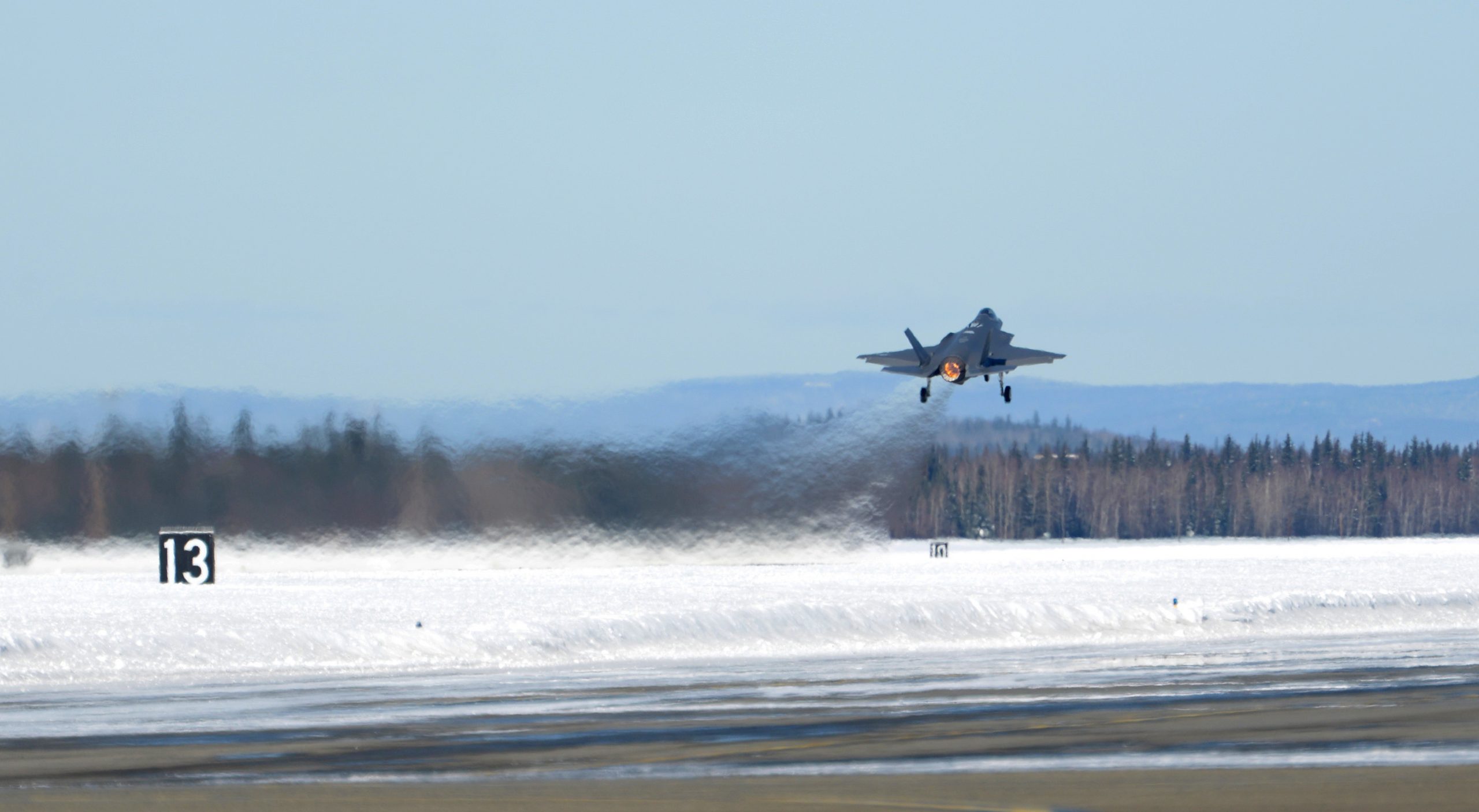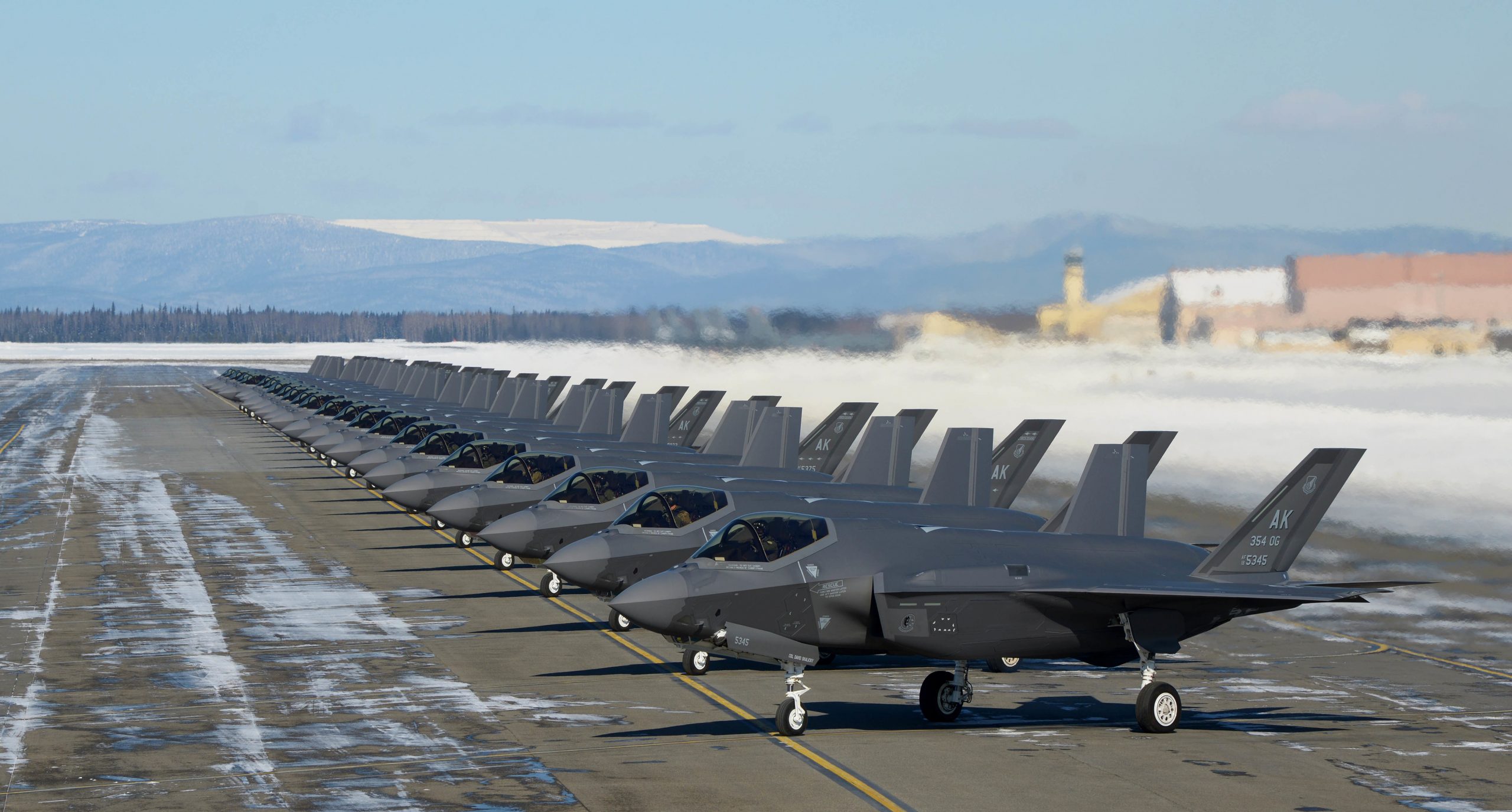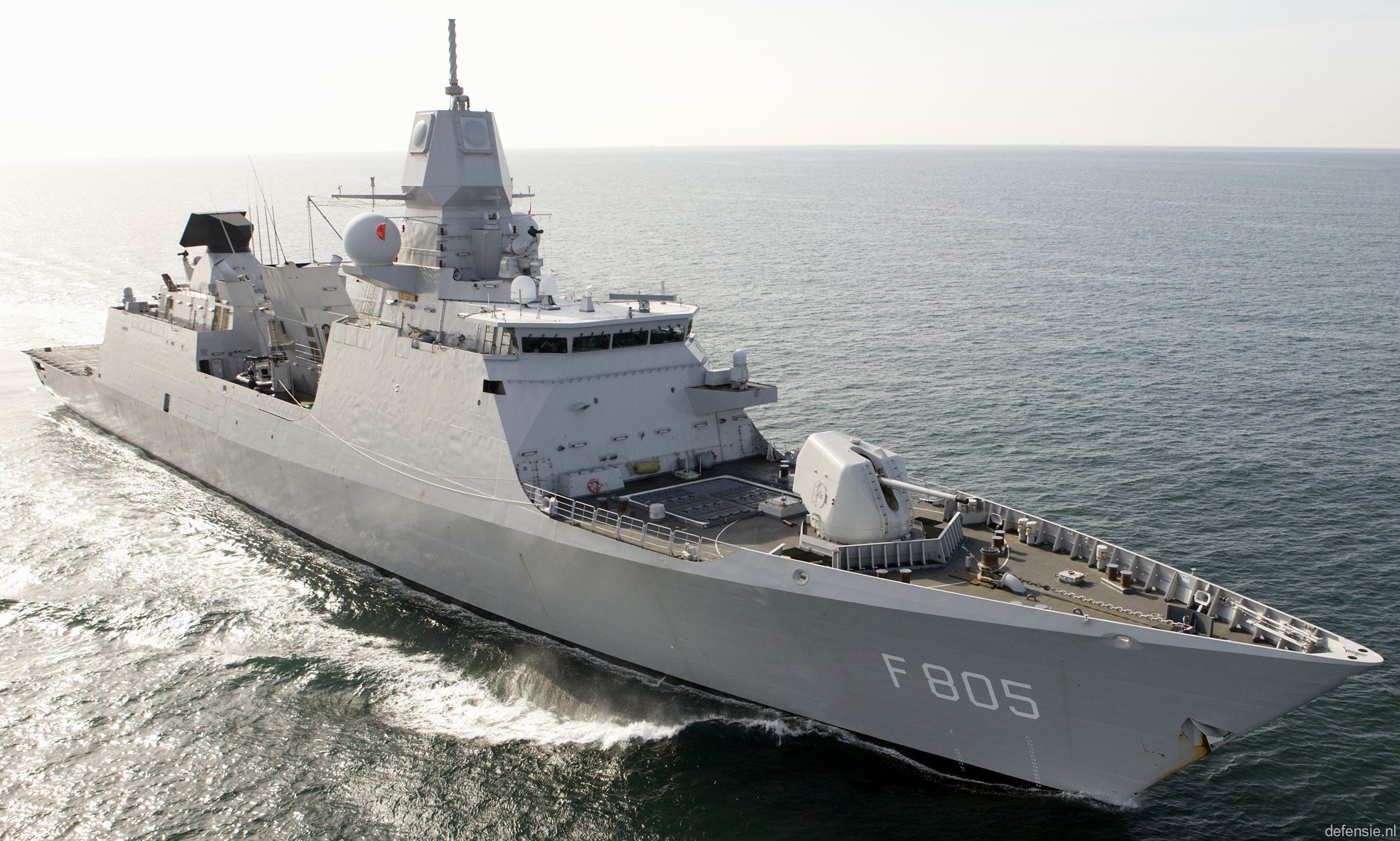The Arctic Gold 21-2 exercise is working the USAF’s approach to what the Navy call distributed operations.
During the exercise this month, airmen are practicing Agile Combat Employment capabilities.
These capabilities allow them to work dislocated operations and to still generated integrated combat power.
In other words, they are working the strategic shift from the land wars to distributed integration operations through kill webs.
As the exercise concluded, a 354th fighter wing story highlighted the exercise.
The earth shakes continuously as a thunderous roar passes overhead. It’s source–rapid mobilization of Eielson’s entire fighter fleet.
F-35A Lightning IIs, F-16 Fighting Falcons, and KC-135 Stratotankers rips through the clouds and as fast as the noise starts, it stops, and silence falls over the flightline.
Arctic Gold 21-2 was a readiness exercise designed to test Eielson’s rapid deployment capabilities alongside the newly implemented Agile Combat Employment strategy.
“This exercise strengthened our ability to mobilize and deploy lethal, expeditionary, fifth-generation airpower,” said Col. David Berkland, the 354th Fighter Wing Commander. “To deliver combat airpower we need the entire fighter wing team. No matter if you support, defend, or deliver airpower, be ready.”
With only half of its F-35A fleet currently, the 354th FW tested its combat tempo during this exercise by demonstrating its ability to rapidly launch, recover, and refuel the F-35A. The wing accomplished its mission and it was a resounding success.
“This is really the first time our combat squadrons are executing a combat readiness exercise of this scale,” said Maj. Lloyd Wright, the 354th Inspector General director of exercises and inspections. “We worked with units across the wing to provide a realistic training environment that really sharpened our edge as a combat wing.”
The IG office has been using their Wing Inspection Team to oversee the efficiency of AG 21-2 procedures. While battling a large snowstorm and a lot of firsts, the 354th FW continues to prove their readiness for combat in the Pacific Theatre.
During the high tempo launches on the runway, Airmen trained on rapid deployment and support capabilities, enhancing the process along the way.
“This exercise provided a glimpse of the formidable combat capability we provide United States Indo-Pacific Command: Two combat-ready F-35A squadrons on call,” Berkland said. “It wasn’t perfect and we learned a lot, but mobilizing 100 percent of our fifth-generation airpower on short notice is a testament to the hard work and excellence of our fighter wing team. Our mission continues to accelerate as the fighter wing changes to a combat culture and we drive on toward full combat capability, fueled by our disciplined, professional, combat-focused Airmen.”
An earlier story published by the USAF on February 22, 2021 highlighted agile combat employment training during the Cope North 21 exercise.
Somewhere above the vast Pacific Ocean, a fighter aircraft has flown for hours, and its fuel supply is running low. Unable to return to its home station for fuel, that’s when Agile Combat Employment (ACE) comes into play. Down below on a small island, three Airmen are waiting to refuel the aircraft and rapidly launch it back into the fight.
“ACE is this warfighting concept that the Pacific Air Forces is trying to operationalize, and we’re doing a pretty good job of it,” said U.S. Air Force Col. Jared Hutchinson, Cope North 2021 exercise director and 35th Operations Group commander at Misawa Air Base, Japan. “The basic concept behind it is that we use our agility to disperse off our main operating bases, and then we execute in a decentralized or more autonomous manner, which allows us to be much more resilient in a contested environment.”
A focal training point for Cope North 21 was to test the ACE multi-capable Airmen concept with our partner nation, Japan.
This concept involves teaching personnel how to complete tasks outside of their assigned Air Force Specialty Code (AFSC). At Cope North, Airmen and members of the Koku-Jieitai were divided into three-person teams, acting as two crew chiefs and a fuels technician. U.S. Air Force Tech. Sgt. Todd Johnson is a standards and evaluations assistant flight chief assigned to the 36th Contingency Response Squadron (CRS) at Andersen Air Force Base, Guam. As a member of the CRS, Johnson could be out the door at a moment’s notice responding to a crisis anywhere in the region, making him a prime candidate for the multi-capable Airmen training.
“If an individual is responsible for completing a task and is unable to do so, it’s very important that the person to his left or right is trained and able to complete the task at hand,” he said. “When you’re on the road, it’s nice to be able to help your counterparts and can become necessary for you to fill their shoes if something unexpected were to happen.”
Unfamiliar at first with the capability, Johnson used a national pastime to explain ACE.
“Think of it like a pit stop in NASCAR. If you have a well-trained and organized team, then a jet will be able to land, get a safety check, get refueled and ready to get back in the sky in just minutes,” he said.
The ACE training consists of three phases: Phase one is classroom academics. Phase two is hands-on training and familiarization with the aircraft. Phase three is real-world execution.
“During academics we covered the requirements for hot-pit refuels including how each area should be set up, the personnel required, skill level and qualifications of each member,” Johnson said. “We also covered both the F-16 Fighting Falcon and F-35A Lightning II hot-pit refuel procedures, danger areas, hand signals and safety measures required to perform the task safely and efficiently.”
Phase 3 took place on Feb. 15 and 16 with Johnson and his team heading out to Northwest Field to put their skills to the test. They hot-pit refueled an F-16 Fighting Falcon and an F-35A, completing all the phases of ACE.
According to U.S. Air Force Staff Sgt. Dustin Mustach, ACE operations have come a long way in such a short time.
“We are no longer taking baby steps with ACE, we are making leaps proving we can operate anywhere,” said Mustach, an F-16 Fighting Falcon crew chief assigned to the 13th Fighter Squadron at Misawa Air Base, Japan. “This ACE operation is going to be a massive reference point for multiple bases. Future ACE operations will be prepared faster, making goals more attainable, which will eventually lead to ACE having much larger goals.”
As the old saying goes ‘with practice comes mastery,’ and the exercises at Cope North 21 worked towards that goal.
“What we learned is only going to improve with repetition,” said Johnson. “As ACE and MCA continue to develop and find its place in the Air Force, what we’ve accomplished and learned this Cope North is going to help build and pave the road for future MCA.”
Editor’s Note: In considering the F-35 in this role, its ability to fight as a wolfpack is a key unique combat capability.
In an article by Robbin Laird published on July 26, 2020, how this is done was the focus of attention and such capabilities make ACE operations ever more effective in providing for distributed integrated capabilities.
In the article on “Standing C2 on its Head,” argued that C2 systems are no longer commodities added platform by platform; they are the operating infrastructure within which platforms find their role within a scalable, tailorable combat force.
But how best to build out such an operating infrastructure based on the force we have, rather than envisaging a new world in 2030?
A key building block in reshaping what C2/ISR can provide for the combat force is how the F-35 is reshaping the combat forces of which it is a part.
In that earlier article. I highlighted how the Marines are experiencing this impact.
“The communications, navigation and identification (CNI) system within the F-35 enables the Marines to not just integrate their F-35s and to work a different approach to knowledge management to inform the maneuver force, but allows Marine Corps F-35s to be integratable with joint and coalition F-35s as well.
“The integration of the F-35 into the Marine Corps and its ability to work with joint and coalition F-35s provides significant reach to F-35 empowered mobile bases afloat or ashore
“In a recent interview which I conducted with Major Brian “Flubes” Hansell, MAWTS-1 F-35 Division Head, we discussed at length what the coming of the F-35 and its integratability capabilities meant for the evolution of the USMC and its role with joint and coalition partners.
“The coming of the F-35 to the USMC has expanded their ability to operate within a broader kill web and to both empower their expeditionary bases as well as to contribute to the broader kill web approach.
“The Marine’s F-35s are part of the broader joint and coalition force of F-35s, and notably in the Pacific this extends the reach significantly of the Marine’s F-35s and brings greater situational awareness as well as reach to other strike platforms to the force operating from an expeditionary base as well as enhancing the kill web reach for the joint or coalition force.
“As Major Hansell put it: “By being an expeditionary, forward-based service, we’re effectively extending the bounds of the kill web for the entire joint and coalition force.”
The F-35 is not just another combat asset, but at the heart of empowering an expeditionary kill web-enabled and enabling force. On the one hand, the F-35 leads the wolfpack. As Major Hansell put it: “During every course, we are lucky to have one of the lead software design engineers for the F-35 come out as a guest lecturer to teach our students the intricacies of data fusion.
“During one of these lectures, a student asked the engineer to compare the design methodology of the F-35 Lightning II to that of the F-22 Raptor.
“I like this anecdote because it is really insightful into how the F-35 fights.
“To paraphrase, this engineer explained that “the F-22 was designed to be the most lethal single-ship air dominance fighter ever designed. Period.
“The F-35, however, was able to leverage that experience to create a multi-role fighter designed from its very inception to hunt as a pack.”
Simply put, the F-35 does not tactically operate as a single aircraft.
It hunts as a network-enabled, cooperative four-ship fighting a fused picture, and was designed to do so from the very beginning.
“We hunt as a pack.
“Future upgrades may look to expand the size of the pack.”
The F-35 is a unique platform, and how the platform operates as well.
It has been designed from the ground up as a low observable platform to operate in contested air space means.
To maintain a low observable signature the aircraft is made from composites and its sensors must be embedded into the skin of the aircraft to ensure that it can operate as a low observable asset.
Anything the aircraft transmits must also be low observable.
This requires the use of low probability to intercept /low probability of detection (LPI/LPD) waveforms and technologies.
The F-35 has been designed from the ground up to be networked within the battlespace.
To do this, it needs low latency communications capabilities that are also low observable.
The F-35 is designed to operate as a networked pack that can then be networked to the rest of the battlespace with the right architecture.
The pack operates at the tactical edge and then enables the entire force throughout the battelspace.
These platform requirements provide the demand side for building the communications system onboard the aircraft.
And given the challenge of combing low latency with low observability, the opportunity to shape in effect a flying smart phone solution was required for the aircraft to fight as a pack.
Given the limited space on any combat aircraft, size, weight, and power (SWaP) must be managed and reduced to improve operational efficiency and logistics, increase mission life, and reduce the total cost of system ownership.
System upgrades are driving added functionality and increased performance, placing additional attention on SWaP.
The solution set worked by Northrop Grumman. the contractor responsible for developing, delivering, and upgrading the CNI system onboard the F-35, provides an ability to use the sensors embedded on the aircraft and to flow that data into a fused system.
In turn, this fused system enables the communication system writ large to both draw upon a network of sensors and to communicate the data fused from those sensors to trusted partners in the battle space.
The system entails an ability to manage the aircraft’s skin and network of sensors through data fusion into a unique box carried onboard the aircraft.
That box holds a series of cards, which enable three functionalities to be fused within the system, namely communications, navigation and identification and that is why it is called the CNI.
The three functions are managed and executed through the CNI system which draws upon the same network of sensors thus providing both low latency transfer of data from the aircraft and effective use of limited space onboard the aircraft.
The box required onboard the aircraft was designed to deal with the data fusion opportunities and the SWAP requirements.
How this box operates and evolves is a key part of the overall Northrop Grumman approach. Overtime, the box has shrunk in size, and the cards have become more capable as hardware capabilities to operate evolving software have been transformed. The interaction among what the cards can do provides the interactive capability which the CNI manages.
Cards can hold different wave forms to enable various ways to connect to combat assets in the battlespace.
The CNI system on an F-35 can manage 27 different waveforms, including the Multifunction Advanced Data Link (MADL) waveform.
MADL is the unique low latency wave form is used for other low latency assets.
MADL requires low latency to support machine to machine interactions between platforms as well.
In contrast, other wave forms, such as Link 16, for example, can be used to inform higher latency assets via that wave form of key information useful to those assets operating in the wider combat space.
The MADL wave form along with how F-35s process data and manage enables F-35s to operate as an integrated combat package able to collectively fuse data, and to do so within a specific force package which by being interactively fused provides higher levels of accuracy than any one combat aircraft operating by itself could provide.
The current F-35 software configuration allows for combined sensor fusion to be shared and able to work seamlessly through the CNI system, and with the MAD wave form they are able to communicate and share situational awareness and to operate in contested air space and make decisions at the tactical edge.
This capability sets the standards for what being able to operate in a contested environment is all about.
Contested airspace ultimately is the ability to operate within that battlespace and to shape effective decisions about how to disrupt the adversaries command and control and key nodes of combat capability to enable the entire force to be used effectively in shaping escalation dominance.
F-35 Pack Operations moving forward highlights and provides a case study of the importance of shaping a more integrated combat force one which can operate in distributed battlespace but be aggregated at the point of attack as the opportunity and need arrives.
It is about reshaping the combat force to become more integratable and when considering new platforms ensuring that integratability is built into these platforms.
It is also a leverage point into shaping a broader approach of C2/ISR capabilities necessary to enable the kind of combat force which can operate across the spectrum of conflict.
The F-35 is a unique platform, but its build out and operational experience sets a dynamic background against which a broader shift in understanding a way ahead to enhance the integratability of a multi-domain force.




